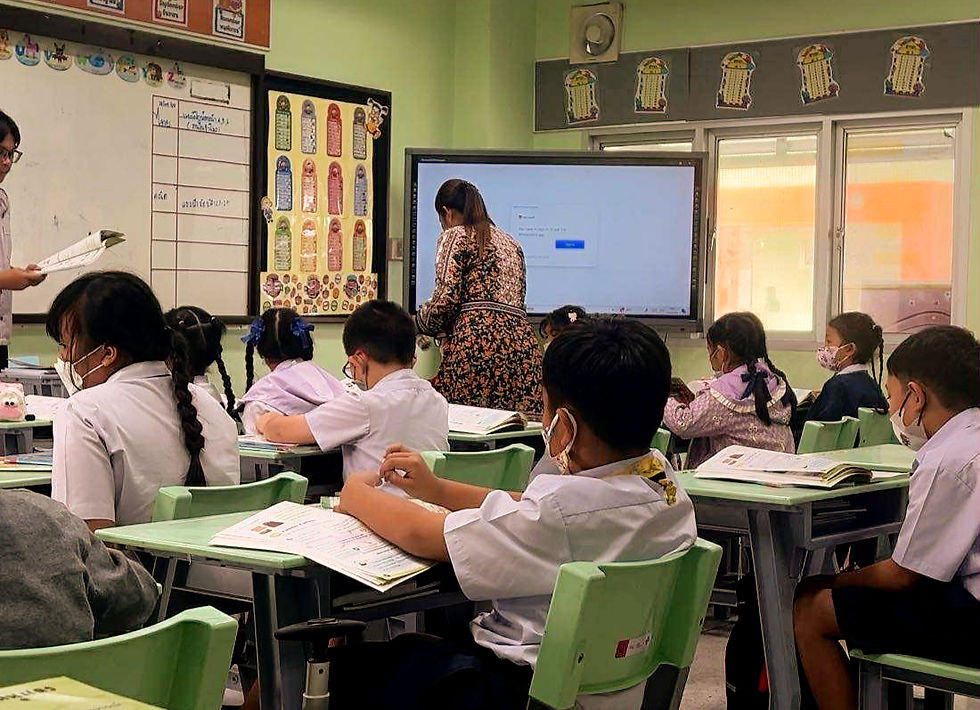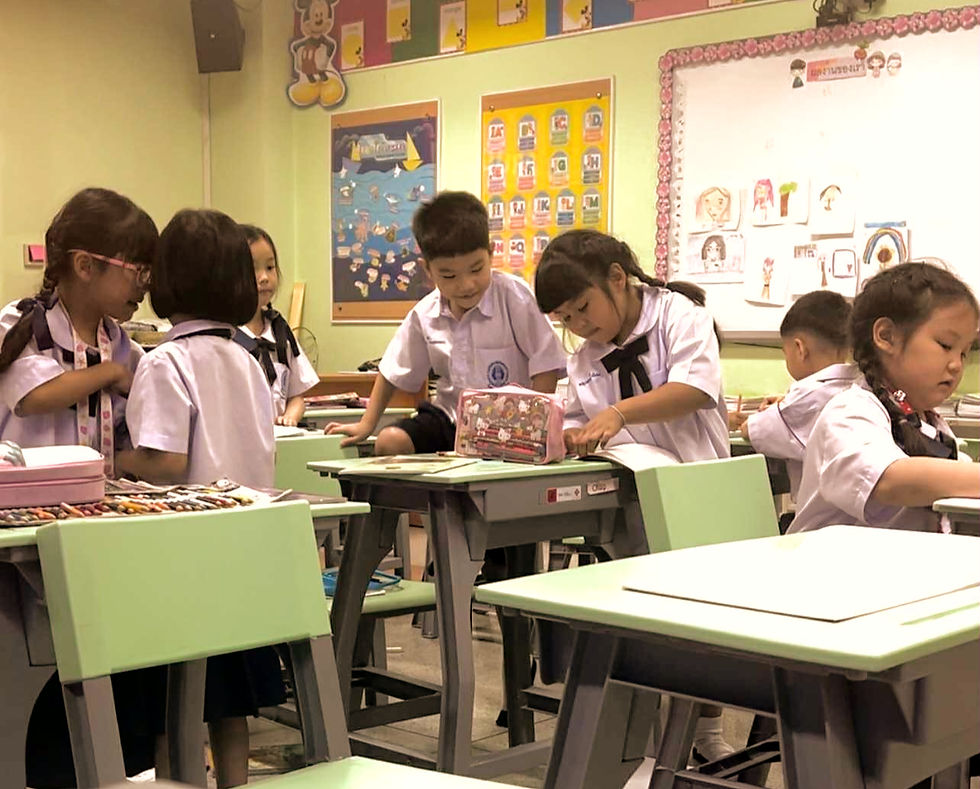Teaching Practice
- blagrada541038
- Jul 7
- 2 min read
Updated: Jul 8
1.1 Procedure of Teaching
During my teaching practice in a Thai classroom, I followed a simple but effective procedure. I always started by greeting the students and receiving their respectful “wai,” which set a positive tone.
I began each lesson with a short review about the previouse discussion, then introduced the new topic using the textbook, PowerPoint slides and videos. To help my shy students feel comfortable, I added fun activities like songs, games or group work to encourage them to participate.
Before ending the lesson, I would ask a few questions to check if they understood and to give them a chance to express their understanding. This routine helped me manage the class well and create a friendly space where my students could learn with confidence.
1.2 Time Management and Organizing Activities
During my teaching practice, I realized how important good time management is in the classroom. I learned to plan each part of my lesson carefully so I could cover everything without feeling rushed. Organizing activities ahead of time really helped me, especially when working with young students. I made sure to balance my lessons with reviews, new topics, and simple activities like songs or group work. This made the students more interested and gave them time to interact, even if they were shy. Managing my time well and preparing activities properly made my classes run smoothly and gave me confidence as a teacher. It also made my students feel more comfortable and ready to learn.

1.3 Classroom Management
During my teaching experience in a Thai classroom, I saw how important good classroom management is for creating a calm and respectful learning environment. I practiced light discipline by setting clear but simple rules, like raising hands before speaking and keeping the classroom tidy. Most students were quiet and well-behaved, but gentle reminders helped keep them focused when they got distracted.
I also used fun activities to keep the students engaged, which reduced the need for strict discipline. By balancing respect, clear expectations, and interactive lessons, I learned that light discipline and good management help students feel comfortable, safe, and ready to learn.

1.4 Problem-Solving While Teaching and Staying in the Designated School
During my teaching practice in a Thai classroom, I faced a few challenges that helped me grow as a teacher. One of the biggest problems was the language barrier. Some students had difficulty understanding English instructions, so I had to speak slowly, and repeat the instructions. Another challenge was that some kids did not listen attentively all the time. At first, this was frustrating, but I learned to manage it by adding more interactive activities, asking simple questions, and giving praise to students who were paying attention.
I also noticed that younger students often moved around and found it hard to sit still. To handle this, I included short songs, interactive games, and movements inside the classroom to help the class more engage and learning will not be passive.
Although these problems were challenging, they taught me the importance of patience, creativity, and understanding my students’ needs and differences. Over time, I found ways to turn these challenges into opportunities for better teaching and learning.

Comments